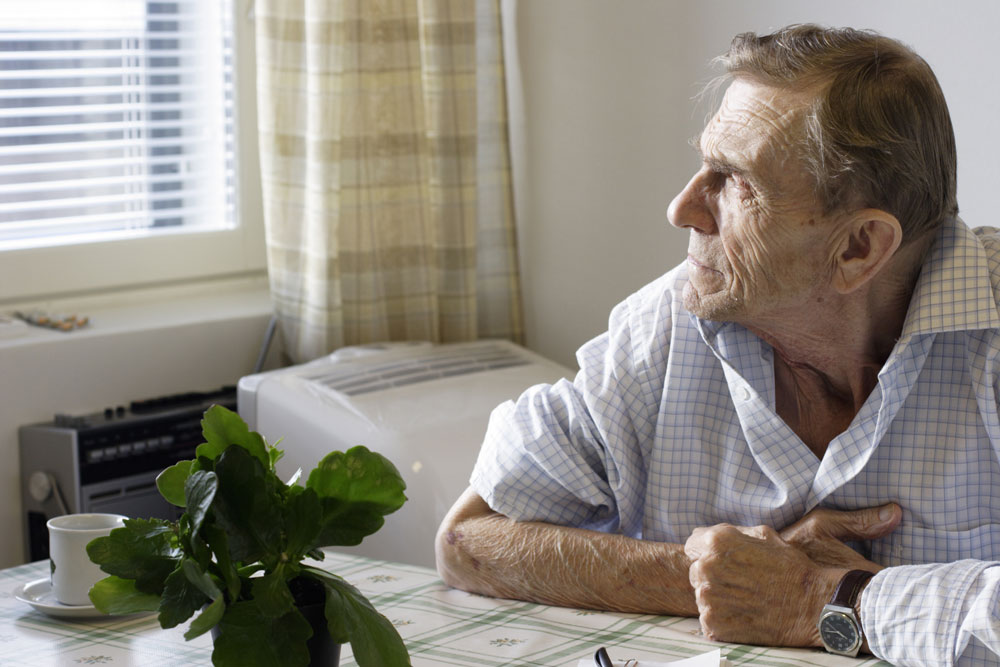Discovering infection spread quickly and implementing effective cohort care at the nursing home
This article is written based on Swedish conditions. Hopefully, it can inspire those interested from other countries.
Quickly detecting and managing the spread of infection is crucial to protect the residents of nursing homes, who are often particularly vulnerable to infections. By implementing effective routines for infection tracking and cohort care, the nursing home can reduce the risk of extensive infection spread and ensure a safe environment for both residents and staff. Therefore, measures need to be taken at the slightest suspicion of infection.
 Foto: Mostphotos
Foto: MostphotosThe Importance of Rapidly Detecting Infection Spread and Effective Cohort Care at Nursing Homes
Rapid detection and management of infection spread is crucial in protecting nursing home residents, who are often particularly vulnerable to infections. By implementing effective infection tracking and cohort care routines, nursing homes can reduce the risk of extensive infection spread and ensure a safe environment for both residents and staff.
When a nursing home encounters infectious diseases, it is essential to take robust measures to limit the spread. This is often referred to as cohort care, which means segregating residents who are infected or suspected of being infected from the rest. This implies that these individuals are cared for in their own department or room and with their own staff. The staff working in the cohort are not allowed to come into contact with other residents. They must not handle food, medication, or anything else that residents outside the cohort will consume.
In order for this to work, all employees must strictly adhere to basic hygiene routines. Soap, water, hand sanitizer, and the use of protective equipment as required by the situation. The measures need to be tailored to the current infection and how it spreads.
Infection spread in a nursing home can be rapid, and it is important that protective equipment is readily available so that cohort care can be implemented immediately when needed. Testing may be required to determine the type of infection spreading in the unit. By informing the hygiene department, the operation can get support in implementing the right measures to stop the infection spread.
Make sure to inform relatives about the infection spread so that unnecessary visits to the unit are avoided. If someone must visit, for example, if someone is dying, ensure that visitors also have access to protective equipment and that they are instructed on how to use the protective equipment correctly.
Medical checks often increase and the focus becomes more medical. Nurses and doctors want to know vital parameters such as temperature, blood pressure, pulse, breathing, and perhaps also oxygen saturation. It is important to remember that those cared for in the cohort may need extra time for social interaction. Otherwise, there is a great risk that they feel isolated and alone. This increases the risk of depression, anxiety, and other mental health issues. This should, therefore, be included in the planning of cohort care. In Sweden, all caregivers are obliged to have access to hygiene expertise. Consult with these to ensure that the measures taken are sufficient.
Rapid Detection of Infection Spread
Staff Training: Staff training is crucial for early detection of infection spread. Regular training of staff on symptoms of common infections and the importance of reporting anomalies can enable faster detection and management of infection spread.
Communication: Effective communication between staff, management, and residents' relatives is important for swift action in case of suspected infection. Clear communication channels ensure that all relevant information quickly reaches those who need it.
Implementation of Cohort Care
What is Cohort Care: Cohort care means grouping residents who are infected or suspected of being infected in a separate part of the nursing home to reduce the risk of infection spread to other residents. This strategy is particularly important during outbreaks of infectious diseases such as influenza or norovirus.
Physical Separation: Create clear physical barriers between the cohort and other residents. This might mean using separate rooms or departments and implementing strict restrictions on who can move between different parts of the nursing home.
Special Staff: Assign a specific group of healthcare staff to only work with cohort care to avoid spreading the infection to other parts of the house. This staff should have special protective equipment and follow strict hygiene routines to minimize the risk of infection spread.
Strict Hygiene Routines
Use of Protective Equipment: Ensure that all staff have access to and use the correct protective equipment tailored to the current infection. This includes protective gowns and gloves, but may also involve face masks and visors depending on the infection.
Hand Hygiene: Promote strict hand hygiene routines by placing hand sanitizer stations around the nursing home and training staff on the importance of washing hands thoroughly and regularly.
Cleaning and Disinfection: Conduct regular cleaning and disinfection of common surfaces and areas used by the infected. Use disinfectants that are effective against the specific pathogens to ensure a safe environment.
Continuous Monitoring and Evaluation
Tracking Infection Spread: Continue to closely monitor the health status of both residents and staff to identify any new cases of infection. This is done through regular checks and updated health reports.
Evaluate Routines: After an infection spread, it is important to evaluate the routines used and identify areas for improvement. By conducting a post-event analysis, the operation can evaluate what worked well and what can be improved to manage future infection spread more effectively.
Continuous Training: Continue to train and update staff on best practices for infection control and cohort care. By staying updated with the latest guidelines, the staff can be better prepared to handle future outbreaks.
By quickly detecting infection spread and effectively implementing cohort care, the nursing home can protect its residents and create a safe and secure environment. This requires careful planning, training, and commitment from all staff.
Search Engine Optimized Headline:
Intro:
Suggested Image Motif: A picture of care staff performing health checks, a department with clear physical barriers for cohort care, or staff wearing protective equipment like gloves and face masks.
Care Staff:
- Is it working well to implement cohort care at the nursing home when needed?
- Are there any situations that are particularly difficult to handle?
Manager, Nurse, Occupational Therapist, and Physiotherapist:
- Does cohort care work as intended in the unit?
- What is the decision-making process?
- Can it be implemented quickly enough during on-call hours?
Residents and Relatives:
- Does the nursing home have good routines to limit infection and infection spread?
Erland Olsson
Specialist Nurse
Sofrosyne - Better Care Every Day

Aktuellt i media
- 2025-12-29 04:00 08 Förebyggande o lokaler
-
2025-12-18 04:00
16 Sjukdom och död
Survivor conversations - an important element in working with next of kin
info Bild från Summer Stock
Bild från Summer Stock - 2025-12-15 04:00 17 Psykisk hälsa
- 2025-12-11 04:00 07 Riskhantering
- 2025-12-08 04:00 06 Dokumentation
- 2025-12-03 04:00 06 Dokumentation






